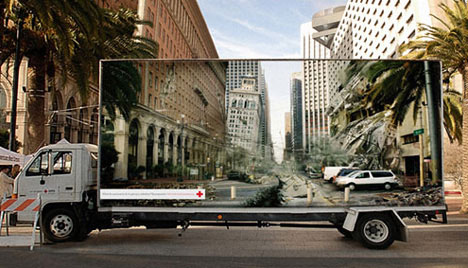 I just finished an interesting book titled "Film As A Subversive Art" by Amos Vogel" which is considered to be among the most unorthodox film histories in history. The author was also the founder of the New York City avantgarde ciné-club Cinema 16 (America's most important film club 1947-1963).
I just finished an interesting book titled "Film As A Subversive Art" by Amos Vogel" which is considered to be among the most unorthodox film histories in history. The author was also the founder of the New York City avantgarde ciné-club Cinema 16 (America's most important film club 1947-1963).The book talks about the history of films that have been subversive in nature, first being used as tools by new, emerging, revolutionary groups (like the socialists and communists) and later being used against these very establishments. He also talks about subversion in a different sense, in the art of film making itself, in the portrayal of ideas, forms, shapes and direction - how they have responded over the years to a constant desire to challenge the existing norms and techniques of film-making (for example he talks about the movement of camera and camera angles as a revolution in itself). The artbook's review says:
So ahead of his time was Vogel that the ideas that he penned some 30 years ago are still relevant today, and readily accessible in this classic volume. Accompanied by over 300 rare film stills, Film as a Subversive Art analyzes how aesthetic, sexual, and ideological subversives use one of the most powerful art forms of our day to exchange or manipulate our conscious and unconscious, demystify visual taboos, destroy dated cinematic forms, and undermine existing value systems and institutions. This subversion of form, as well as of content, is placed within the context of the contemporary world view of science, philosophy, and modern art, and is illuminated by a detailed examination of over 500 films, including many banned, rarely seen, or never released works.
The essence of book lies in eternal subversive art, where the author stresses that subversiveness is an inseparable attribute of true art. The freedom to question lies at the heart of what art is all about.
Indeed, if you notice, one of the most prominent periods in history of art was during the renaissance age, which undoubtedly came about as a result of opposition to the existing Church regime.
Its really amazing to see the time and age when Vogel wrote down the book. The fascimile edition, you will notice, is written such that the concepts have been conveyed in so abstract a sense that they are meaningful even today. This and this will give you a better read into the history / biography of Vogel and Film at his time, including cinema 16.
His work seems to be inspired in part by the outrage against Nazi oppression of occupied Europe. (He fled Nazism with his parents in 1938 to the American South, where, he noted, the racial divide was analogous to the anti-Semitism he witnessed in Europe).
We are what we are today as a result of what our ancestors were yesterday. In pre-historic times, the fear of attack and conflict with other tribes/animals was a catalyst for social bonding and building of groups. This, as it often happens, was (mis)used by many as a tool for power during the medieval ages, and later during the 19th century too (If you remember, it was the fear of communism that lead to appeasement of, and the rise of fascism WWII). In today's world, the fear is not as much of attack or danger, as it is about the curb of freedom.
Its not only about Film, but any art in general is used by the prevailing authority to reinforce the prevailing cultural values and beliefs. Look at China today, talk about the "cultural revolution", look at the promotional art propagated by the nazis, The communists at the time of Lenin were no different. Look at the media today, they seem to be reinforcing beliefs too.
But then history is witness to the fact that the nature of art is such that there cannot be no contradiction. There will always be a form of art questioning the prevalent obvious. Theres a British band (the name slips my mind, ill update the post when I recall later) who have taken it upon themselves to produce the most horrifying and unpleasant music as is humanly possible. This they say, is their attempt to oppose social norms and do things differently.
Grosz once said of his work:
I drew and painted out of a spirit of contradiction, trying in my works to convince the world that it was ugly, sick and mendacious
If you have ever heard of the Manhua comics, you will realize that what I am trying to say.
The first Manhua comic appeared on the Chinese market in 1928. The genre was used as a political tool during the Second World War and by Mao's regime, before being adopted by today's underground artists, intent on challenging the state.During Mao's Great Leap Forward and the Cultural Revolution, comics were used as propaganda, featuring a smiling workforce and heroic images from folk legends.
In recent years, the artform has been adopted by a group of underground illustrators to challenge notions of freedom and modernisation in China.
Because of their subversive nature, Manhua comics are not granted licences to be sold in bookshops, so artists give away artwork or send it free to mobile phones.
[Offtopic note: Manhua comics now come to britain ]
Here's another take on subversive art blogging.
And Here's a really interesting depiction of subversive art in guerilla marketting.


If you ever get to read the book, and if you appreciate it, you would love to view the films that he discusses at great length. Here's a site which makes an attempt to provide most of them.
IMO, the quest for subversion will forever remain as long as art remains; for there will always be opposition and curbs of varying form and degree in times to come. There will always be something to oppose and something to embrace, for change is the only constant, and without that, we cease to exist.
IMO, the quest for subversion will forever remain as long as art remains; for there will always be opposition and curbs of varying form and degree in times to come. There will always be something to oppose and something to embrace, for change is the only constant, and without that, we cease to exist.

No comments:
Post a Comment